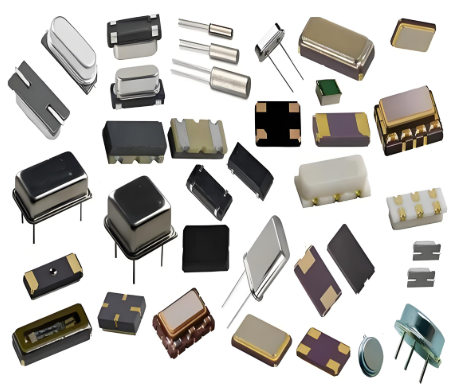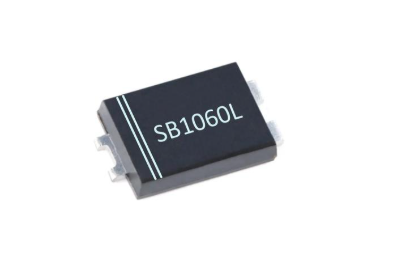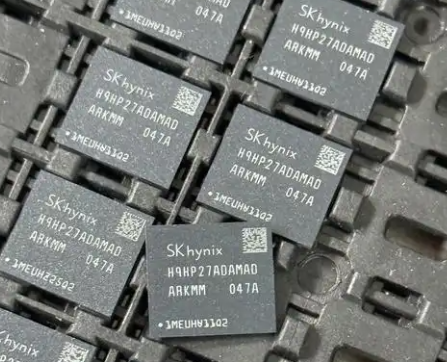Classification of Common Electronic Components
Introduction
In the intricate world of modern technology, electronic components are the fundamental building blocks that bring our devices to life. From the simplest calculator to the most complex supercomputer, every piece of electronic equipment relies on a symphony of these tiny parts working in perfect harmony. Understanding the classification of these components is not just an academic exercise; it is essential for anyone involved in electronics design, repair, procurement, or hobbyist projects. A solid grasp of how components are categorized allows for better circuit design, more efficient troubleshooting, and smarter sourcing decisions. This foundational knowledge empowers engineers and enthusiasts to navigate the vast landscape of electronic parts, selecting the right component for the right job. As we delve into the systematic classification of common electronic components, we will explore their distinct roles, characteristics, and applications, providing a comprehensive map to this critical technological domain. For those seeking to source these components reliably, platforms like ICGOODFIND offer a streamlined approach to finding authentic parts.

Main Body
Part 1: Passive Components – The Foundation of Circuitry
Passive components are the bedrock of electronic circuits. They are defined by their inability to amplify or control electrical current using another electrical signal. They can only absorb energy, unlike their active counterparts. Their operation is typically linear, and they do not require a power source to function in their basic capacity. This category includes some of the most ubiquitous components found in nearly every electronic device.
Resistors are arguably the most common passive component. Their primary function is to oppose the flow of electric current, thereby controlling the amount of current that passes through a circuit. This is used to set bias points for active devices, divide voltages, and limit current to protect more sensitive components. They are measured in Ohms (Ω). Resistors come in various forms, including fixed resistors (with a set resistance value), variable resistors or potentiometers (where resistance can be adjusted), and thermistors (whose resistance changes with temperature). The color-coded bands on a resistor provide a quick visual reference to its value and tolerance.
Capacitors are components that store electrical energy in an electric field. Think of them as tiny, rechargeable batteries that can charge and discharge very quickly. They are constructed from two conductive plates separated by an insulating material called a dielectric. Their key property is capacitance, measured in Farads (F), though most practical capacitors are in the microfarad (µF) or picofarad (pF) range. Capacitors are crucial for filtering noise from power supplies, blocking direct current (DC) while allowing alternating current (AC) to pass (a technique known as AC coupling), and stabilizing voltage levels. Major types include ceramic capacitors (small and cheap, good for high-frequency applications), electrolytic capacitors (high capacitance, polarized, used for power supply filtering), and tantalum capacitors (similar to electrolytic but more stable and reliable).
Inductors are the third fundamental passive component, storing energy in a magnetic field when electric current flows through them. They essentially resist changes in current. An inductor is typically a coil of insulated wire wound around a core, which can be air or a magnetic material like ferrite. Their property is inductance, measured in Henries (H). Inductors are vital in applications involving alternating current. They are used in conjunction with capacitors to create tuned circuits for oscillators and filters, in power supplies to smooth out rectified current, and in transformers to step up or step down AC voltages.
Finally, Transformers are a specialized type of passive component consisting of two or more coils of wire coupled by a magnetic field. They are used to transfer electrical energy from one circuit to another through electromagnetic induction, often while changing the voltage and current levels. A step-up transformer increases voltage while decreasing current, and a step-down transformer does the opposite. They are indispensable in power supply units for converting mains voltage to a usable level for electronic circuits and for providing galvanic isolation between circuits for safety.
Part 2: Active Components – The Brains and Muscle
Active components are the dynamic elements of a circuit. They can control the flow of electricity, amplify signals, and act as switches. Crucially, they typically require an external power source to operate and can introduce power gain into a circuit (output power can be greater than input power). This category includes the components that perform the “thinking” and “acting” within an electronic system.
Diodes are the simplest active components, acting as one-way valves for electrical current. They allow current to flow freely in one direction (forward bias) while blocking it almost entirely in the opposite direction (reverse bias). This property makes them essential for rectification—converting AC to DC. The most common is the rectifier diode. A special type of diode, the Light Emitting Diode (LED), emits light when current passes through it and has become the standard for indicators and lighting. Another critical variant is the Zener diode, which is designed to allow current to flow backwards at a specific breakdown voltage, making it perfect for voltage regulation.
Transistors are arguably the most important invention in modern electronics, serving as both amplifiers and switches. They are semiconductor devices with at least three terminals. By applying a small current or voltage to one pair of terminals, the transistor can control a much larger current flowing through another pair of terminals. The two main families are Bipolar Junction Transistors (BJTs), which are current-controlled, and Field-Effect Transistors (FETs), which are voltage-controlled. As amplifiers, they take a weak signal and produce a stronger replica at the output. As switches, they can turn currents on and off billions of times per second, forming the basis of digital logic in microprocessors and memory chips.
Integrated Circuits (ICs) represent the pinnacle of electronic component integration. An IC is a complete electronic circuit—containing transistors, diodes, resistors, and capacitors—fabricated onto a single tiny chip of semiconductor material, usually silicon. This miniaturization has enabled the incredible power and compactness of modern devices. ICs can be analog, such as operational amplifiers (op-amps) and voltage regulators; digital, such as microprocessors, microcontrollers, and memory chips (RAM, ROM); or mixed-signal, combining both on one chip. The complexity of ICs can range from a simple logic gate with a few transistors to a system-on-a-chip (SoC) containing billions.
When designing with or sourcing these sophisticated active components, engineers often turn to specialized distributors like ICGOODFIND. These platforms provide critical technical data, availability information, and access to genuine parts from a wide range of manufacturers.
Part 3: Electromechanical and Other Components
Beyond the purely electronic passive and active components lies a category that bridges the electrical and mechanical worlds: electromechanical components. These devices use an electrical signal to create mechanical movement or vice-versa.
Switches are among the most basic electromechanical components. They are used to interrupt or divert the flow of current in a circuit, providing user control over a device’s function. Types range from simple toggle and push-button switches to complex rotary and DIP (Dual In-line Package) switches used for configuration settings on circuit boards.
Relays are electrically operated switches. They use a small electrical current to energize an electromagnet, which then mechanically opens or closes one or more sets of contacts capable of carrying a much larger current. This allows a low-power circuit to safely control a high-power circuit—for example, a microcontroller output pin turning on a motor or an AC mains lamp.
Connectors are essential for providing removable links between different parts of a system. They allow for modular design, making assembly, repair, and upgrades feasible. This category includes everything from simple pin headers and sockets on PCBs to robust USB ports, Ethernet jacks, and coaxial cable connectors.
Furthermore, it’s important to acknowledge components that don’t fit neatly into the previous categories but are vital nonetheless. * Sensors: These devices detect changes in physical properties like light (LDRs), temperature (thermocouples), pressure, or motion and convert them into an electrical signal. They act as the “senses” for an electronic system. * Actuators: The opposite of sensors; actuators convert an electrical signal into physical action. Examples include motors (rotational movement), solenoids (linear movement), and speakers (sound waves). * Transducers: A broader term encompassing both sensors and actuators—any device that converts energy from one form to another. * Oscillators: These circuits generate a continuous, repetitive alternating waveform (sine wave, square wave) without any input. They are the “heartbeat” of digital systems, providing the clock signal that synchronizes operations. * Crystals, typically quartz crystals, are used in oscillator circuits to provide extremely stable and precise frequency references for microcontrollers and communication equipment.
Conclusion
The systematic classification of common electronic components into passive elements like resistors, capacitors, and inductors; active elements like diodes, transistors,and integrated circuits;and electromechanical devices like switchesand relays provides an indispensable framework for understandingand navigatingthe fieldof electronics.Each category playsa distinctyet interconnected rolein bringingfunctionalityto our technological world.Passive components manage energy flowand provide stability;active components process informationand enable control;and electromechanical devices bridge the digital commandswith physical actions.Mastering this classification system empowers designers,troubleshooters,and enthusiastsalike tomake informed decisions,fostering innovationandefficiency.Whether youare sketchinga new circuit ona napkinor procuring partsfora large-scale production run,havingaclear mental mapof component typesis crucial.For streamlined access toa vast inventoryof these classifiedcomponentsfrom reputable suppliers,the roleof specialized platformslike ICGOODFIND becomesinvaluablein turning theoretical designsinto tangible reality.

















